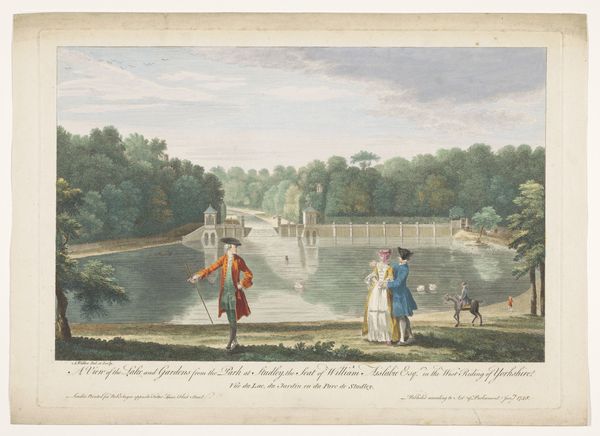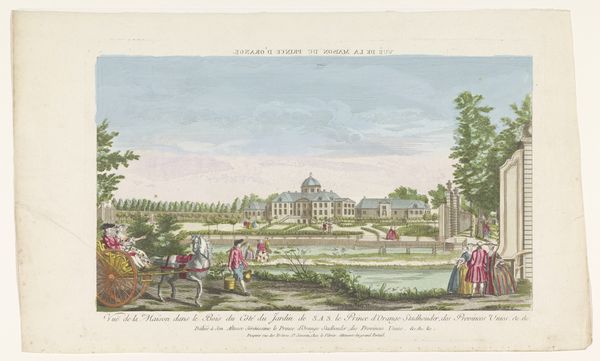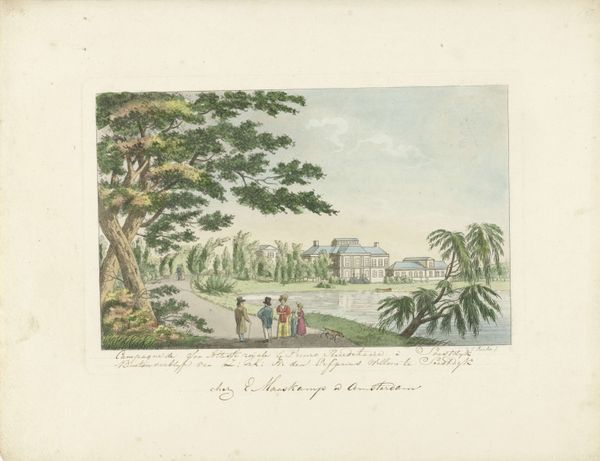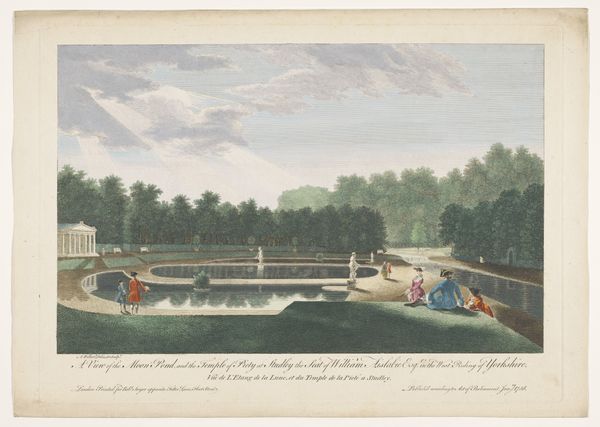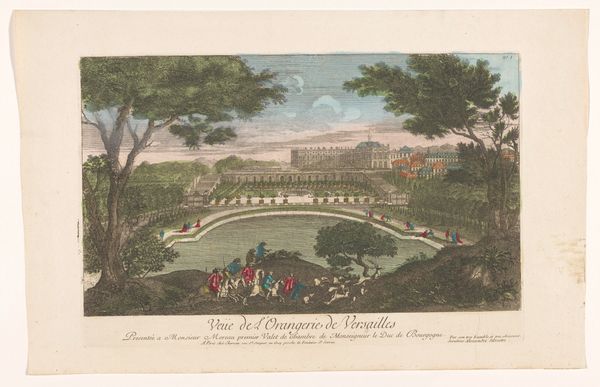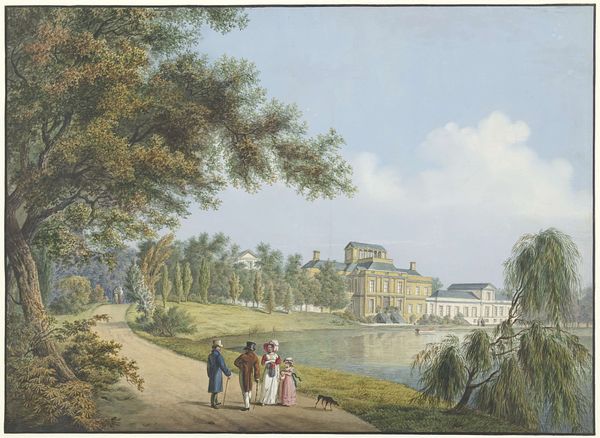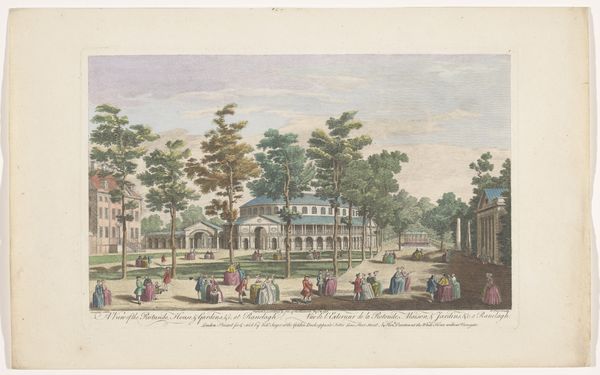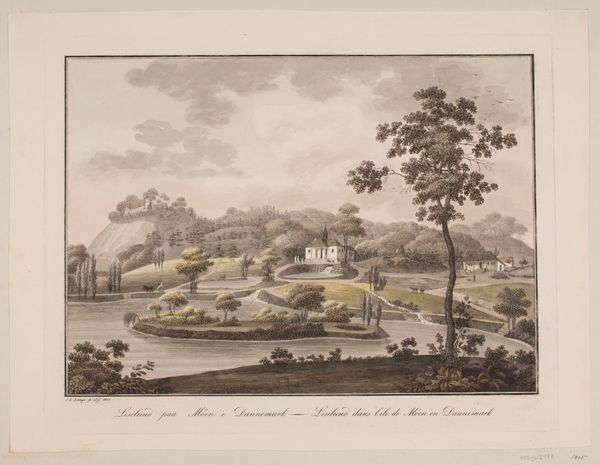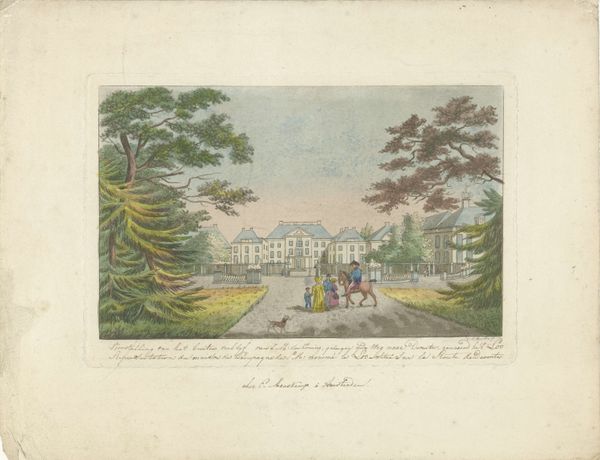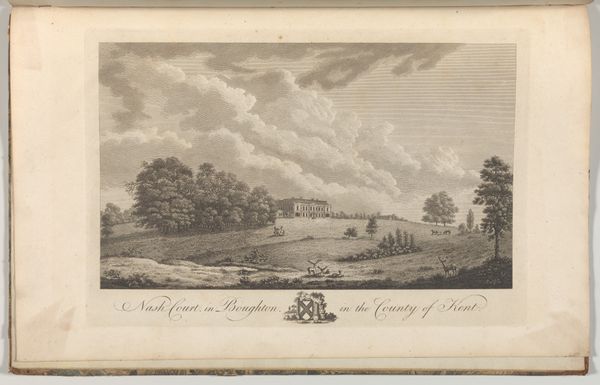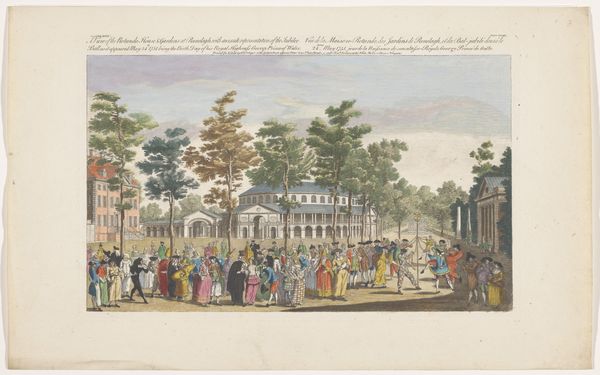
painting, print, watercolor
#
neoclacissism
#
painting
# print
#
landscape
#
watercolor
#
coloured pencil
#
cityscape
#
genre-painting
#
history-painting
#
academic-art
#
watercolor
Dimensions: height 342 mm, width 472 mm
Copyright: Rijks Museum: Open Domain
Editor: This is "Gezicht op Studley Royal Park en Fountains Abbey te Yorkshire," a print and watercolor landscape by Robert Sayer from 1758, housed in the Rijksmuseum. It depicts a pastoral scene, quite picturesque, with people in the foreground and an abbey in the distance. What draws your eye, Professor? Curator: Well, firstly, I'm interested in Sayer's choice of printmaking coupled with watercolor. This points to accessibility and mass production. How does that affect the value and perception of landscape art, traditionally associated with wealthy patrons commissioning unique paintings? Editor: That's a fascinating point. I hadn’t considered the democratization aspect of printmaking in relation to landscape. Curator: Exactly. Think about the labour involved. The print allowed for workshops, possibly employing many artisans to meet demand. Was it marketed as ‘art’ in the same way a unique oil painting was? How did Sayer navigate the shifting landscape of artistic production? Notice how the medium is also, well, of the Earth – watercolor relies on pigment, sourced from specific regions, ground and mixed. Consider the cost of materials and how it all reflects this specific society. Editor: So you’re suggesting the means of production influences how we interpret the scene itself? Curator: Precisely. The serene scene presented belies a network of labour, resource extraction, and economic activity. Even the depicted leisure activities in the garden are possible due to certain systems of social control and wealth creation. Who benefited from this “picturesque” landscape? Who were the producers? Editor: This really changes my perspective. I was so focused on the aesthetic beauty but hadn’t really looked into the industry of creating it and the wealth and access it represents. Thank you. Curator: Art isn't just about representation. It’s embedded within specific material realities. Examining the materials and methods unveils deeper societal insights.
Comments
No comments
Be the first to comment and join the conversation on the ultimate creative platform.
